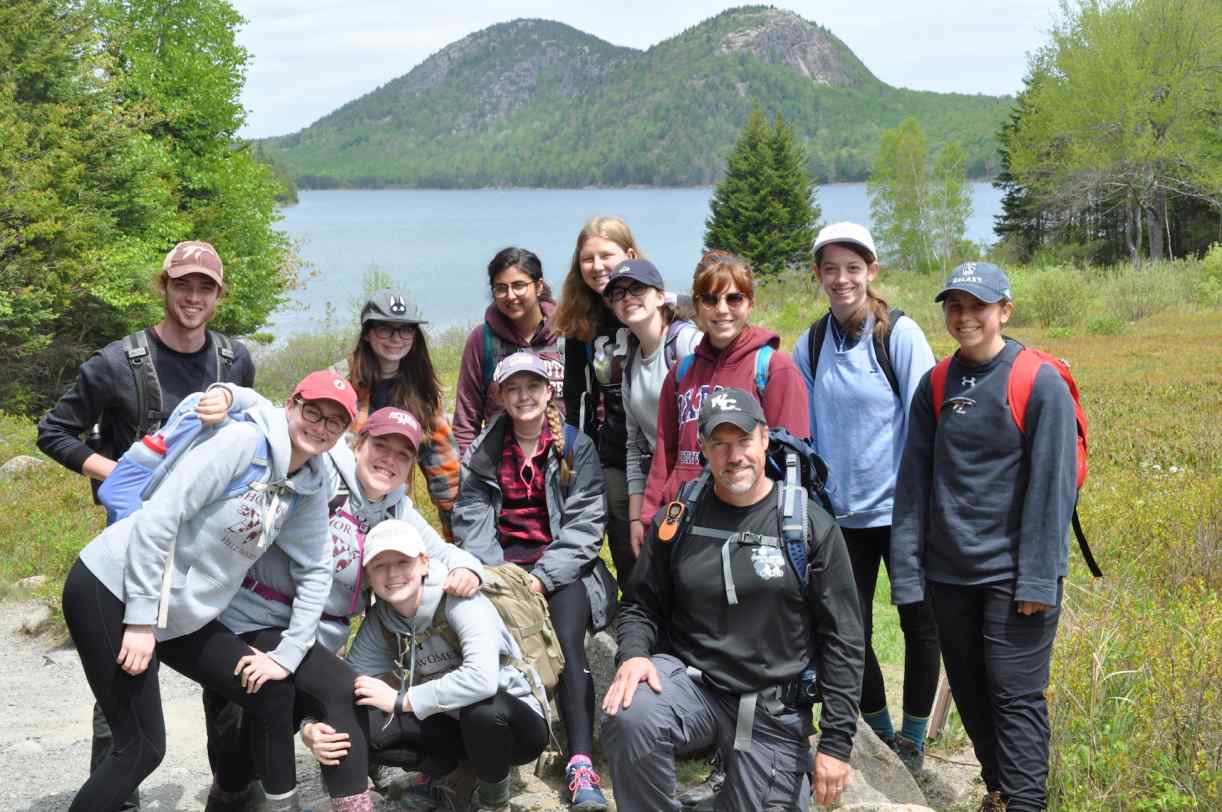Maine Attraction
For two weeks in May, a group of WC students immerse themselves in the ecology, history, and beauty of Acadia National Park.

Maybe it's watching the sunrise atop Cadillac Mountain—the highest point on the East Coast—and gazing across the sea to Nova Scotia; or finding a gem-like sundew, a carnivorous plant, along a trail shaded by fragrant spruce trees; or flipping over a granite stone in a tidal riffle to find a tiny, dazzling brittle star. Whatever it might be, the glorious classroom that is Acadia National Park never fails to provide plenty of what Martin Connaughton, co-chair of Washington College's Department of Biology, calls “gee-whiz moments” for the students who travel with him every other year to Maine for two weeks of full-immersion ecological study.
The Community Ecology of Coastal Maine is the course's official name, and it happens biennially in May, starting the week after commencement. Based from the Mount Desert Island Biological Laboratory, the class comprises two weeks of intensive study of terrestrial and marine biology and ecology, nearly all of it carried out on foot or by boat throughout the oldest national park on the East Coast. Mountains, beaches, saltwater tidal pools, freshwater beaver ponds, boreal forests, bogs—they're all here, a diversity of habitats that has drawn scientists for generations.
“The greatest thing students get out of it is learning in the field,” says Connaughton, who trains all spring for the trip's vigorous hiking. “They hear about it in lecture, then they go out and see it in action, the same day, instead of just seeing it on a slide. They really thrive in this environment. And, it's exposure. Some of these kids have never seen a hill bigger than the Chesapeake Bay Bridge. A lot of them don't know how to wear a backpack properly.”
Community ecology describes a variety of different species living together in the same place and how they interact. For the first week, students hike every day up the mountains and into the forests to document and gather data on plant and animal species that dwell in these habitats. “Sometimes we'll be comparing the diversity of two sites in one day, a hardwood forest and an alpine forest, for example.” Connaughton says. “The students know before we go out what kind of data they're going to have to collect, they have data sheets, equipment, field guides. They are in charge of the work.”
The second week is devoted to marine ecology, the rocky intertidal zone and tide pools. “The tidal riffle? It's all there. The past couple of years we've been catching lobsters, sea cucumbers, brittle stars, you name it.” In between, there are kayaking trips, history cruises, and studies of geology, glaciology, and oceanography. Each day starts with breakfast and a lecture, then comes the day's work in the field, followed by dinner, more discussions or readings, then lab reports or prep for the next day. The days are long, intense, and packed.
“I think something else they take away from this is a different learning paradigm,” Connaughton says. “It's the team effort involved, and the fact that they're living together the whole time, discussions together, meals together, cooking breakfasts for each other. Even if you have students who are a little quiet, they don't stay quiet for long.”